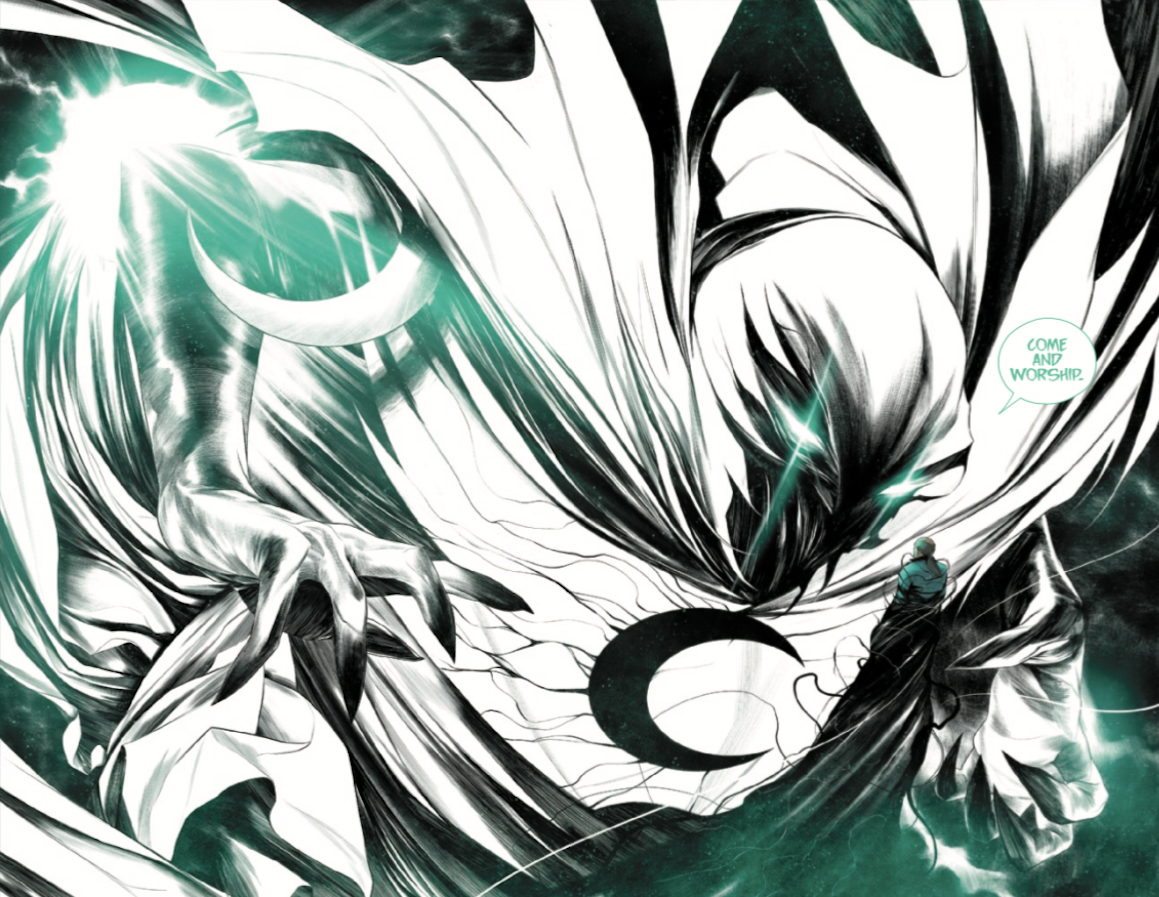Moon Knight complicates the brutal vigilante’s spiritual conflict
Before he's played by Oscar Isaac on Disney Plus, the Marvel superhero Moon Knight begins a new mission

When someone invests in a belief system built around an abstract, metaphysical god, they set themselves up for a crisis of faith when that god doesn’t prevent bad things from happening to them. Now imagine what kind of crisis of faith you’d experience if your god was a literal being that tried to take over the world. This is where Marc Spector is in the new Moon Knight (Marvel), which positions the character as a spiritual leader estranged from the god he’s supposed to serve.
Jed MacKay became one of Marvel’s go-to writers after the surprising sales success of his Black Cat series, and while the concept of his Moon Knight story is built on a complicated spiritual conflict, the book prioritizes superhero action rather than leaning into the psychological elements that have defined recent runs with the character. Beyond passing mentions of Marc Spector’s dissociative identity disorder, the series doesn’t spend much time on his alternate personalities, instead keeping the focus on his Moon Knight identity.
With a Disney+ series starring Oscar Isaac on the horizon, Moon Knight is about to get a huge profile boost; the first issue of McKay’s run uses a conventional device to deliver exposition, giving Moon Knight an Avengers-appointed therapist to break down his backstory and current circumstances for those unfamiliar with the character. Mercenary Marc Spector was a bad guy until he decided to turn on the other bad guys he was working with. They tried to kill him, but instead left him susceptible to supernatural influence when the Egyptian god, Khonshu, offered Marc a second chance at life in exchange for his servitude. Khonshu recently faced off against the Avengers during an attempt at world domination, and while this challenged Marc’s devotion, it has also reinforced his sense of duty.
Moon Knight is now the high priest of the Midnight Mission, and he’s taken on the responsibility of his disgraced and imprisoned god, protecting those who travel by night. There are strong echoes of Immortal Hulk in this new Moon Knight, specifically its emphasis on a nocturnal hero who has been fundamentally altered by exposure to a supernatural force and now cannot die. Like Immortal Hulk, Moon Knight also starts with stories that wrap up in a single issue. The debut issue gets bogged down in exposition but plants a lot of seeds to harvest in the future, and the creative team is firmly settled into the new status quo by the second.
Alessandro Cappuccio previously worked as an inking assistant for artist Simone Di Meo on Mighty Morphin’ Power Rangers, and there’s a clear connection between both artists, particularly in how they lay out action with thin panel borders and extreme angles. Cappuccio plays with scale in compelling ways: He uses a full two-page spread to show Moon Knight crashing through a windshield, then pulls far back for a panel of the van flipping over, a three-part sequence that shows the hero’s movement through the vehicle via the shortening of his cape. Rachelle Rosenberg’s coloring recognizes the visual impact of Moon Knight’s white costumes, placing him against bright gradients that make his monochromatic uniforms pop on the page.
There are some impressive graphic compositions in these first two issues, and all of them use the moon as the central visual element. There’s a beautiful panel of Moon Knight gliding through the city, his cape forming a white crescent that wraps around the glowing orb in the sky. The moon plays an even bigger part in the second issue’s big set piece, a moment of hallucinatory horror that shows Moon Knight pulling his way out of the moon and emerging as a giant monster that holds his prey in the palm of his hand. It’s a sequence that showcases how stepping into Khonshu’s shoes grows Marc Spector’s power, but given the malevolent nature of the god, it’s only a matter of time before the power corrupts.
